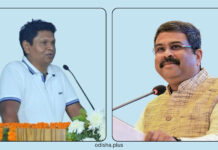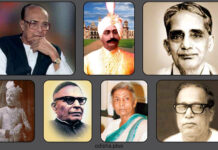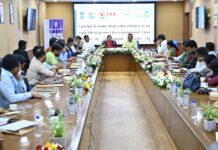Kailash Chandra Dash

In the first six decades of the 20th century in Odisha there was an unprecedented awakening among the native historians to vocalize the past. They were Mrutyunjaya Rath, Jagabandhu Singh, Tarini Charan Rath, Pandit Arttatrana Mishra, Chandra Mohan Maharana, Kripasindhu Mishra, Brajabandhu Das, Brajabandhu Patnaik, Mahendra Pattnaik, Gopabandhu Vidyabhushan, Paramananda Acharya, Kedarnath Mahapatra, Satyanarayana Rajaguru, Lakshminarayana Harichandan Jagaddeba of Tikkali, Ghanashyama Das, Binayak Mishra and Krushna Chandra Panigrahi. They made several reconstructions of the past of Odisha and their views were published in different historical and literary journals and in the different sessions of Utkala Sahitya Samaj, Utkala Sammilani and other associations. They wanted a comprehensive picture of the past of their race for sustaining their identity which was fragmented. It led to the birth of a historical consciousness which was linked with the construction of a regional linguistic and cultural identity.
The formation of Odia province on linguistic basis and situating Odisha province in the national mainstream at a time when other linguistic provinces had already got domination led to a reconstruction of their history. Many enthusiastic Odias wanted to change the colonial historiography of Odisha and consequently a new trend for fostering historical consciousness was in progress. It was in fact a nationalist passion and Odias reconstructed their own history on the basis of new interpretation of the extant archaeological and literary sources. The great historians of the 1940s and 1950s in Odisha were Paramananda Acharya,Ghanashyam Das, Prabhat Mukherji, Kedarnath Mahapatra, Krishna Chandra Panigrahi and Nabin Kumar Sahu. They followed a completely different approach in their study of Odisha history. They attempted to vocalize the long silence in the past of Odisha by an analytical assessment of the records and traditional accounts. In this backdrop we like to articulate the works of Nabin Kumar Sahu who made several revisions and additions in the history of Odisha and left an indelible mark in Odishan historiography.
Nabin: A born historian
Nabin Kumar Sahu(1922-1985) first appeared as a historian in Odisha for his narratives in the Odia journals like Sahakara and Naba Bharata from 1948 to 1950. In Sahakara in 1948 Sahu presented a general study entitled Prachina Bharatare Ganatantra Shasana(Democracy in Ancient India) and that was the period when he was a student of History in MA class in Allahabad University. In October 1948 when this essay was highlighted India was only an independent country for one year and two months. Sahu was very careful of his sources and narrated the dynastic rule in early India where also he showed the rise and growth of democratic ideas. He had presented the existence of republican states(Gana Rajya) although he admitted the hegemonistic attitude of monarchical states in early Indian context. Sahu had then followed a historiographic trend which was free from any bias and in that essay he made an objective assessment of the past.
Thereafter as he started his teaching career in Christ College in 1949 he became more attracted to regional history and focused his further attention to this aspect for many decades. He appeared with regional focus in 1950 in Nababharata. In Nababharata in 1950 from April to July he had two interesting articles on Jainism and Indus Civlization and thereafter he became more vocal in interpreting sources on Kharavela-his life and time. His first two articles-one on the problem of the identification of Adinatha Rishabha with Jagannatha and the second with Surendra Mohanty on the context of Jainism and Indus Civilization in Nababharata indicated his historical consciousness of a rational order and in these articles Sahu was careful of selecting documents and their proper interpretation which would help in vocalizing the silence in the past of Odisha and early India. His two interesting and insightful essays in the Nababharata indicated his wider knowledge on the history of early India and shaped considerably his further approaches to regional problems.
In Nababharata he had also serialized a debate on the time of Kharavela, the celebrated king of Kalinga in early phase. In 1951 again he became more interested on Jagannatha and presented insightful essay in Nababharata in two instalments. Thus his discourse on the time of Kharavela, the linkage of Jainism with Indus Civilization as well as discovery of the Jaina root in Jagannatha in 1950-51 in Nababharata articulated his wider historical consciousness and his considerable interest on regional Odisha history of the early phase. The editor of Nababharata was Nilakantha Das who had then fostered the idea of the linkage between Jainism and Jagannatha and Nabin Kumar Sahu as a young historian began to share this view.
Nabin and his work in the 1950s
TThe famous career of Nabin Kumar Sahu as a historian began in the 1950s when he began concentrating on Odisha history. He presented his insightful articles on early history of Odisha in the Indian History Congress and in this respect from 1949 he had taken keen interest in presenting papers in the wider platform of Indian History which is Indian History Congress. In the 1950s his papers on Odisha history were published in Bihar Orissa Research Journal, Orissa Historical Research Journal, Marg and in the Proceedings of All india Oriental Conference. In 1956-57 A History of Orissa in two volumes were compiled and published which contained the old articles of A.Stirling, W.Hunter, John Beames and it included a long chapter of N.K.Sahu entitled Orissa from the Earliest Times to the Present Day. This chapter though brief contained an interesting narrative on the history of Odisha from the earliest phase upto 1947. In this long chapter Sahu utilized both literary and archaeological sources for the reconstruction of the political history of Odisha and it displayed his extra-ordinary skill of precision and comprehension. This period was remarkable for Sahu to delve deep into the past of early Odisha and his considerable interest on archaeological remains of Odisha led him to present his thesis on Buddhism in Odisha in 1955. His thesis entitled Buddhism in Orissa was approved by Utkala University and in 1958 it was published by Utkala University.
This work was written under the scholarly supervision of Nalinaksha Dutt, professor of Pali, Calcutta University whose illuminating forward embodying the depth of his scholarship considerably heightened its merit as a piece of research work. This work was enriched by the valuable suggestions offered by Hari Narayana Sinha, famous historian of Odisha who was then the Principal of Agra College, J.N.Banerjee, the Carmichael Professor of Ancient Indian History and Culture, Calcutta University. Sahu also was influenced by the works of famous historians of Odisha then like K.C.Panigrahi and Prabhat Mukherji whose views on Buddhism and Buddhist remains in Odisha were carefully reconsidered by him.
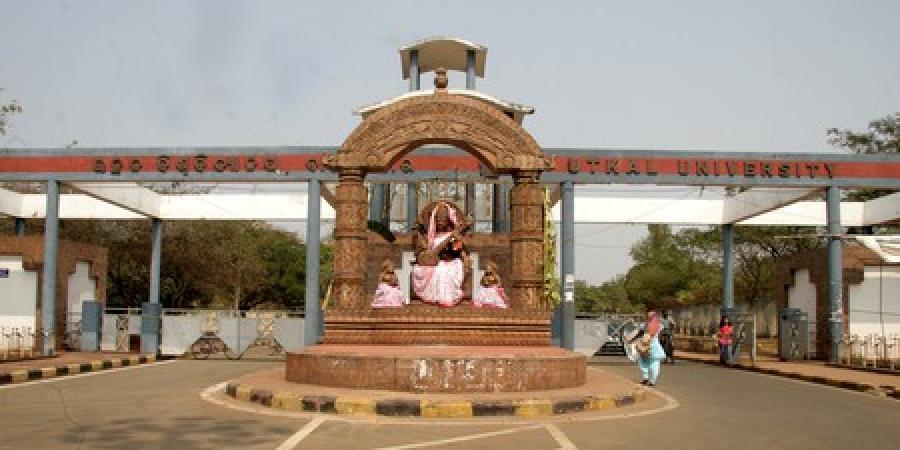
Buddhist Research
Nabin Kumar Sahu`s Buddhism in Orissa was a major milestone in the long road of the researches on the history and Culture of Odisha. As stated by N.Dutt in his forward on the work Sahu had performed a formidable task by furnishing a mass of information culled from various sources. It was presented in a superb style and in a brilliant narrative form. The work was of great significance because of paucity of information on the early phase of Buddhism in Odisha. It was particularly valuable for its scholarly exposition of the origin and development of Hinayana, the Mahayana, the Tantrayana and Yogachara systems of Buddhism. A comprehensive study of the progress and decline of Buddhism in Odisha, a paramount centre of Buddhist activities in early and early medieval phase, was furnished by Sahu in this brilliant doctoral dissertation. He made an exhaustive study of all the aspects of Buddhism as it evolved in the course of about 2000 years, pointing out where evidence permits, the contribution made by the people, saints and scholars of Orissa.
He had enriched his work by a reproduction along with an analytical study of the finds of images and sculptures so far discovered within the borders of the province. That phase in Odisha was remarkable for the debate on Buddha`s homeland in Kapileswar, but Sahu remained free from this unnecessary debate. He only pointed out this debate in his Odia text entitled Odishare Buddha Dharma which was published in 1960 by the Odisha Sahitya Academy. Though his work Buddhism in Odisha was a documentary study(a narration of literary and archaeological sources) he had also revisited many important works particularly the remarks of K.C.Panigrahi on the Buddhist remains of Bhubaneswar. He had also presented interesting and insightful analysis in the text which considering his time was a novel one. His work thus became a formal paradigm of Buddhist studies in Odisha in the subsequent phases with the discovery of more reliable archaeological remains and with the progress of an objective assessment of the past.
His interpretation of Mahayana and Tantric art in early medieval Odisha in the text displayed his extra-ordinary regard for interpretation and proper documentation. Of course Sahu in that phase was not free from the so-called nationalist temper, giving sometimes unnecessary importance to events and places. Despite all shortcomings this masterpiece Buddhism in Orissa is an imperishable contribution in the field of Indian religious history.
In the 1950s besides his brilliant doctoral dissertation on Buddhism Sahu had several papers on the political history of early and medieval Odisha. Many of his papers then appeared in the Orissa Historical Research Journal which was a potential pillar of Odishan studies in the 1950s and 1960s. A significant work of Nabin Kumar Sahu which made him extra-ordinarily famous in India was the Utkal University History of Orissav(Volume-1). A comprehensive history of Odisha was a long felt need which was demanded from the side of the Utkala Sahitya Samaja in the beginning phase of its formation . The Academic Council of the Utkal University formed a Committee on 19th August 1944 consisting of members like Chintamani Acharya, S.Ray, G.S.Das, P.Mukherji and H.N.Sinha.
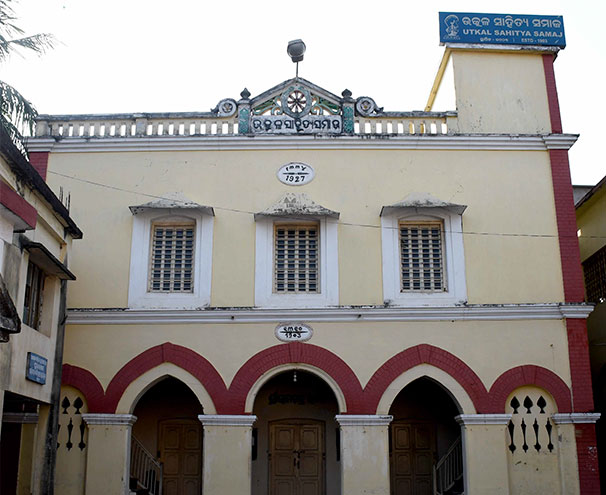
The Committee met on 27th October 1944 and submitted its report to the Academic Council which was accepted by the Council on 22nd March 1945 and forwarded to the syndicate for necessary action. The scheme was not accepted upon for some years. In 1954 the matter was again taken up and an editorial board consisting of H.K.Mahatab, G.S.Das, D.C.Sircar, H.N.Sinha and R.P.Das was appointed for the purpose. The first meeting of the editorial board was held in Bombay on 27th June 1955 and it was decided to write three comprehensive volumes. For various reasons the above decision did not materialize.
The Committee was reorganized in May 1959 with H.K.Mahatab, the then Chief Minister as its Chairman and P. Parija, the Vice-Chancellor as Vice-Chairman. Nabin Kumar Sahu was entrusted with the work of writing the history of Orissa from the earliest times upto 1568 and the work started in right earnest from June, 1959.The book was named Utkal University History of Orissa and was divided into seven volumes of which Sahu was to compile four volumes from the earliest times upto 1568. The first volume of Utkal University History of Orissa, from the earliest times upto A.D. 500 was compiled by Nabin Kumar Sahu and it was published in 1964 by the Utkal University.
This work on the political history of early Odisha was a major contribution of Sahu and it embodied his recent researches on the dynastic history of early Odisha. Written in brilliant English and incorporating both literary and archaeological sources then available Sahu presented a comprehensive analysis of the past of early Odisha. His exhaustive study of the ancient geography as well as dynastic history of early Odisha was a major milestone in the long road of the compilation of the history of South Eastern India. Sahu in this volume presented many new documents and their critical study which though not flawless was a novel adventure in his period.
His study of the Kalinga war of the illustrious Maurya king Ashoka, his interpretation of the famous Hatigumpha inscription on the celebrated king Kharavela and his narrative on the development of dynastic rule in Kalinga, Kosala, Kongoda, Odra and Utkala present an interesting sidelight on the history of early India. Although according to K.C.Panigrahi, a famous historian of Odisha, this volume was unnecessarly long and with many unwanted descriptions, Sahu`s Utkal University History of Orissa is a magnum opus and provided a formal paradigm for the compilation of the history of Odisha in the subsequent phases. There were no doubt studies on early Odisha by R.D.Banerji, Jagabandhu Singh, Krupasindhu Mishra, M.N.Das, H.K.Mahatab and even K.C.Panigrahi but a connected and systematic study of the political aspects of early Odisha was in long need which Sahu attempted with some success in his Utkal University History of Orissa in 1964.
Inclination for early Odisha history
n the 1960s besides this Utkal University History of Orissa Sahu began to take considerable interest on the regional history and culture of Odisha and he became successful in his researches. He had already prepared the manuscript of the second volume of Utkal University History of Orissa in this phase, but it remained unpublished. He was in charge of writing the history of the districts like Koraput, Mayurbhanj, Bolangir in this phase which were incorporated in the District Gazetteers of Odisha. He had also contributed several interesting studies in Odia in, Chandrika, Nabajibana, Jhankara and Konarka.His interesting focus on the homeland of Jayadeva in the Souvenir on Jayadeva in 1969 which was even appreciated by his critic K.C.Panigrahi in his History of Orissa in 1981 was a new approach to the study of the problems on the homeland of Jayadeva.
His interest on Odishan studies began to grow in astonishing speed in the 1970s when edited volumes containing his interpretative focus on the cultural history of Odisha became widespread. In the Proceedings of Orissa History Congress, New Aspects of History of Orissa, Sambalpur University Research Journal, Proceedings and Souvenir of International Studies on Buddhism and Jainism, Souvenir:of Third Purva Bharat Samskrutika Sammelana, New Directions of Tourism in Orissa, Interim Excavation Report, Sidelights on History and Culture of Orissa and Souvenir of Orissa Sahitya academy Silver Jubilee one can notice the masterpieces of Sahu beeming with new light and new approaches.
An insightful and innovative study of Nabin Kumar Sahu in the field of historical researches in India was Kharavela. His work Kharavela which was published in 1984 as a Golden Jubilee publication of Odisha State Museum, Bhubaneswar was the outcome of his sustained researches in the topic from his early part of teaching career. His views in this respect first appeared in Odia magazines like Navabharata and thereafter in his Utkal University History of Orissa in 1964 and also in 1982 in Konarka which indicated his intense love for this aspect of Odisha history. Sahu attempted an exhaustive study of the available sources on Kharavela, thoroughly checked the famous Hatigumpha inscription and other inscriptions in Khandagiri and Udayagiri of Bhubaneswar and also went through the literary texts particularly Jaina Ramayana, references in Brahmanda Purana and Khandachala Mahatmya of Vamadeva Rath. With a comprehensive study of the sources he presented this monograph. As we know intensive research was made by scholars in the late 19th and the first half of the 20th century to bring to light the activities and the accomplishments of Kharavela.
But in spite of sincere attempts to unravel his accounts he remained to a great extent an obscure figure in Indian history. The source materials for the history of Kharavela are mostly epigraphical and find corroboration in sculptural and architectural remains rather than in literary evidences-a view fostered by Sahu is absolutely correct. As he stated in the preface of his work-The Hatigumpha inscription together with the relief sculptures in the caves of Udayagiri and Khandagiri, project before us a sophisticated tradition of dance and music, a high order of culture and artistic exuberance, a developed literary taste as well as vision of history and chronology-all of which indicate a prosperous country and a vigorous society that got patronage and inspiration from the great king Kharavela. Sahu with this assessment attempted a rational study on Kharavela. Much has been said about him since James Prinsep deciphered the Hatigumpha inscription and masterpieces have been produced by scholars like Bhagwan Lal Indraji, Kasi Prasad Jayaswal, Beni Madhab Barua and others. But still more works remained to be done.
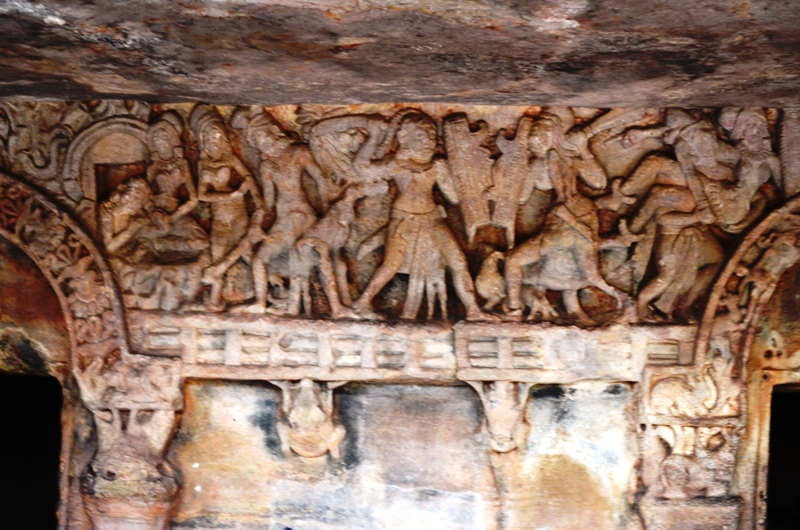
Sahu has considerably shaped the ideas of his study with a reinterpretation of the Hatigumpha inscription which must be taken into account by the future scholars working on Kharavela. Sahu`s Kharavela is a fascinating study of inexhaustible interest. His interpretations as well as narration of the events associated with Kharavela definitely add to our knowledge. He had thoroughly presented the views of the early scholars starting from A.Stirling and C.Mackenzie till his time and showed a critical review of their works on Kharavela. He himself thoroughly analysed the content of the Hatigumpha inscription and even tried to decipher the script. Then he tried to present the controversial points associated with the study on Kharavela and attempted to solve the unsettled questions in the study of the inscription. As he stated cogently in his monograph the accounts of king Kharavela have been presented not only through the inscriptions engraved in the caves of the Udayagiri hills, but also through the medium of sculptural art carved out in the caves of the hill.
Sahu had accepted the names of the kings of the time of Kharavela as recorded in Hatigumpha inscription as they were stated in their original form like Bahasati Mita and Nanda Raja. The identification of Bahasati Mita with Pushyamitra Sunga and Nandaraja with Ashoka was not accepted by Sahu. In this context we like to add that the composer of the Hatigumpha inscription would not like to state the names in a covered form-Nandaraja being Ashoka and Bahasatimita being Pushyamitra as was done by K.C.Panigrahi. On the other hand the names used in the record may represent their original identity-Nandaraja being a Nanda king before the Mauryas and Bahasatimita, a local king of North india. Nanda Raja stated in the Hatigumpha inscription was represented as a benevolent king and not as a conqueror like Ashoka.
If Nandaraja was identical with Ashoka Kharavela would have used his first act like the possession of the sacred seat of Jina and he would have suppressed his other work of benevolence like excavation of a canal in Kalinga. Such description also indicates that in the Hatigumpha inscription the invader Ashoka has been suppressed and that Nandaraja being associated with benevolent work in Kalinga was a well known king of Nanda family ruling before the Mauryas. Moreover there was no reason to hide the identity of the kings in the inscriptions and it was only done in the Puranic traditions. Hence Sahu is more correct in his identification and the charge of conjectural reading of the inscription on him by K.C.Panigrahi is absolutely unwarranted.
Publications and Awards
His work Kharavela was published in 1984 as a Golden Jubilee publication of Odisha State Museum, Bhubaneswar. With a comprehensive study of the sources he presented this monograph. He had thoroughly presented the views of the early scholars starting from A.Stirling and C.Mackenzie till his time and showed a critical review of their works on Kharavela. He himself thoroughly analysed the content of the Hatigumpha inscription and even tried to decipher the script. The identification of Bahasati Mita with Pushyamitra Sunga and Nandaraja with Ashoka was not accepted by Sahu. On the other hand, the names used in the record may represent their original identity-Nandaraja being a Nanda king before the Mauryas and Bahasatimita, a local king of North india. Nanda Raja stated in the Hatigumpha inscription was represented as a benevolent king and not as a conqueror like Ashoka.
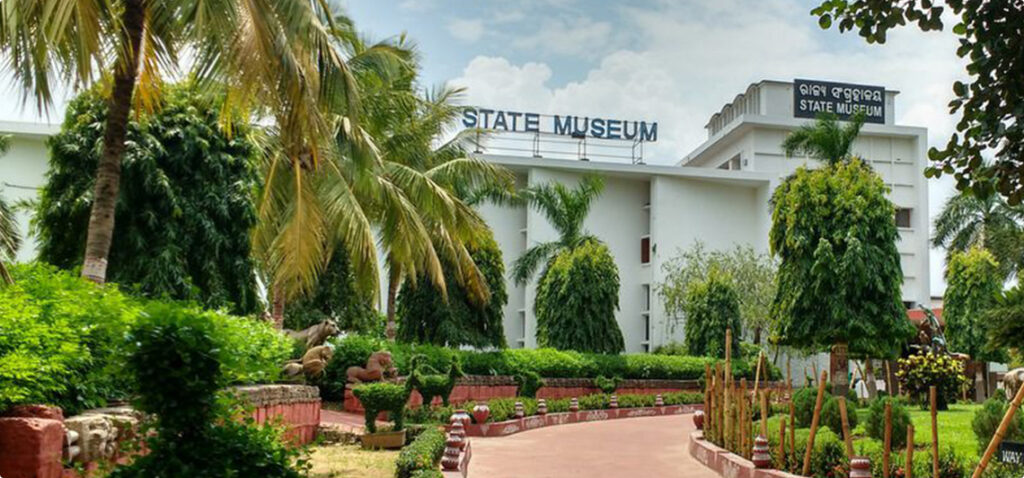
Sahu was very much interested on the antiquities of the sites in Western Odisha. In an essay in Jhankara (a well-known Odia monthly magazine) in the 1960s Sahu presented an interesting focus on Kalinga Hiraka (diamonds of Kalinga). In an elaborate essay in Odia Sahu described on the basis of literary and epigraphic records that Sonepur which was called Paschima Lanka in the medieval age was really the Lanka of the age of Ramayana. He had found Northern Black Polished Pottery in Sonepur zone and his access into tantric literary texts as well as traditional accounts on Suvarnapura-Lanka motivated him to identify this zone as Ravana`s Lanka. He was a curious observer of the past of the Western Odisha. In the 1980s while his historical horizon was widened he presented his great landmark entitled Veer Surendra Sai and he articulated that the rebellion of Veer Surendra Sai in Sambalpur was an integral part of the all India revolution of 1857-58.
Nabin: A name Odisha will remember
Nabin Kumar Sahu was an outstanding historian in the post-colonial phase in Odisha. His researches from 1950s to 1980s furnish several clues for understanding the early and medieval Odisha. He was able to utilize the literary and archaeological sources available in his time and having been free from a narrow sub-regional outlook he had articulated a past which with all additions as well as revisions provided considerable impetus to the scholars and historians of Odisha and abroad. His significant works like Buddhism in Orissa, Kharavela and Veer Surendra Sai stand to-day as potential milestones for the researchers on Odisha.



